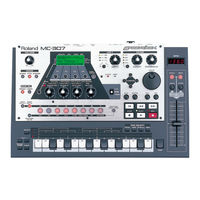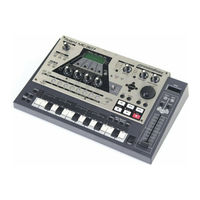Roland Groovebox MC-307 Manuals
Manuals and User Guides for Roland Groovebox MC-307. We have 3 Roland Groovebox MC-307 manuals available for free PDF download: Reference Manual, Service Notes, Turbostart
Roland Groovebox MC-307 Reference Manual (216 pages)
Brand: Roland
|
Category: Music Mixer
|
Size: 3 MB
Table of Contents
Advertisement
Roland Groovebox MC-307 Turbostart (2 pages)
Brand: Roland
|
Category: Music Mixer
|
Size: 0 MB
Table of Contents
Advertisement


